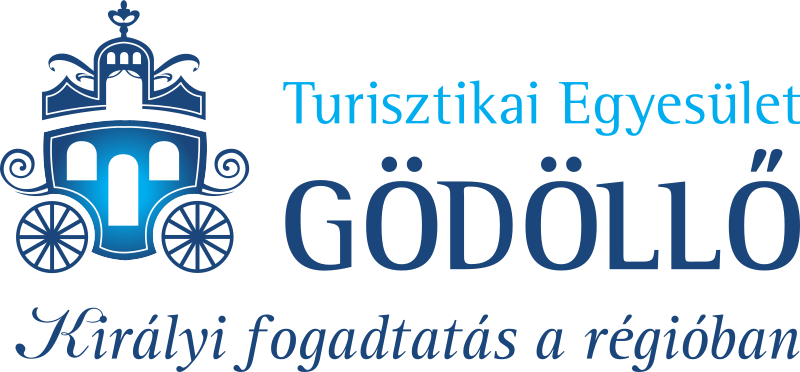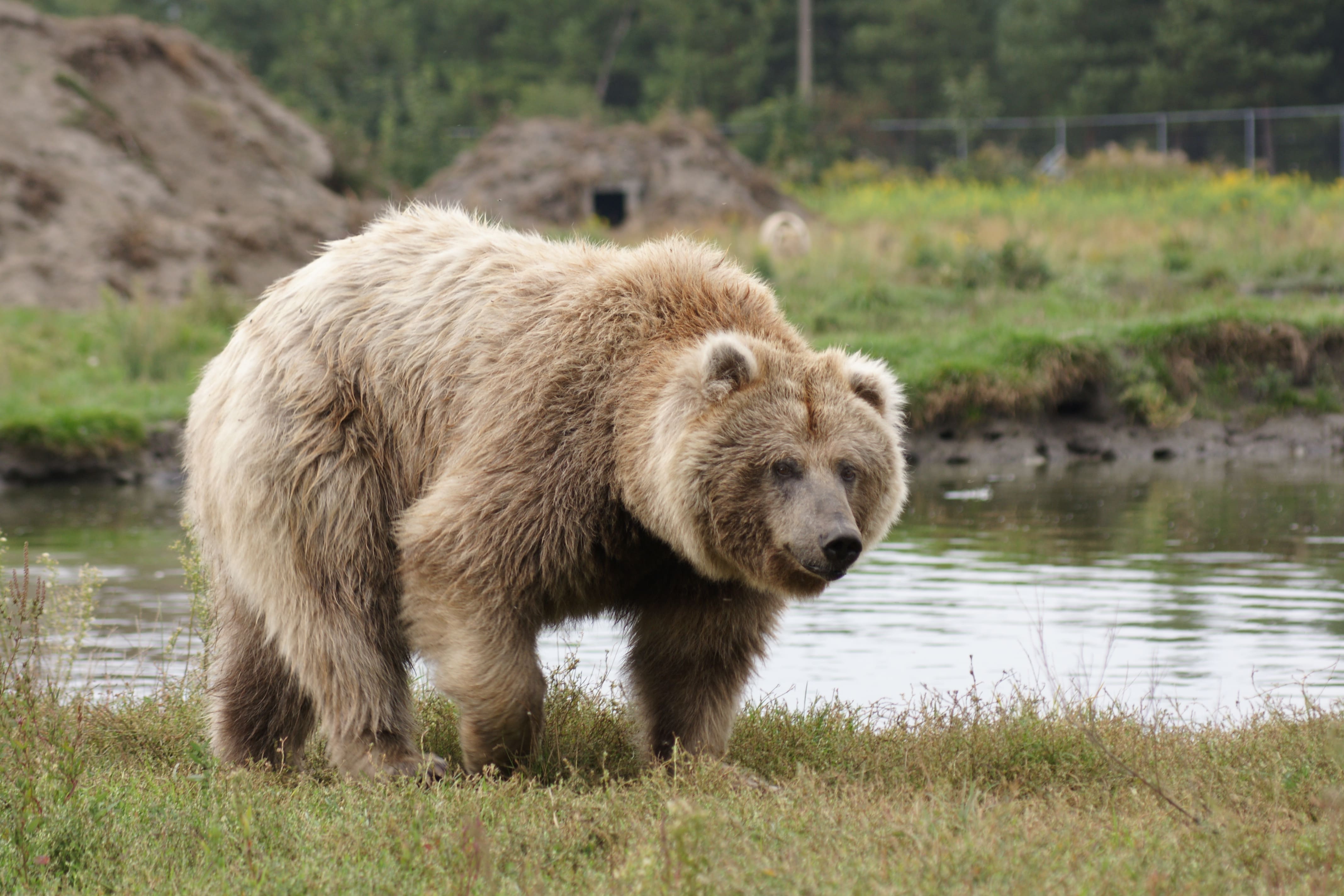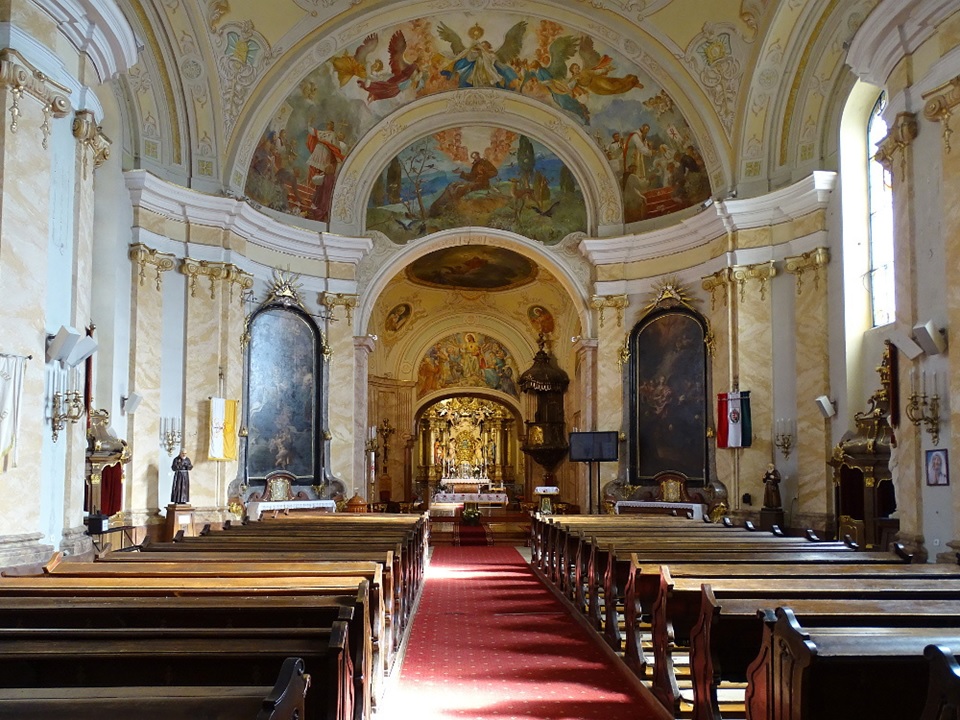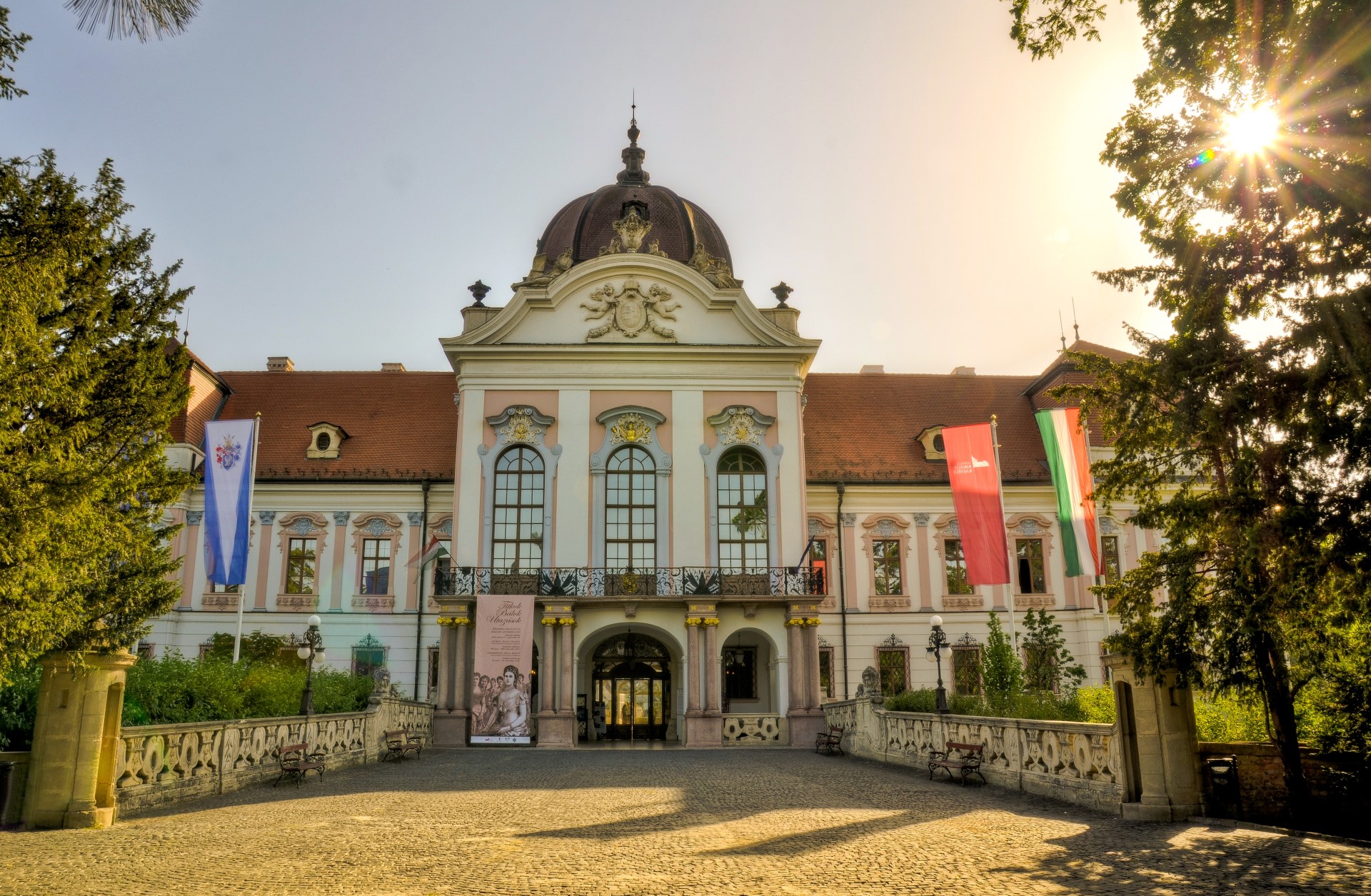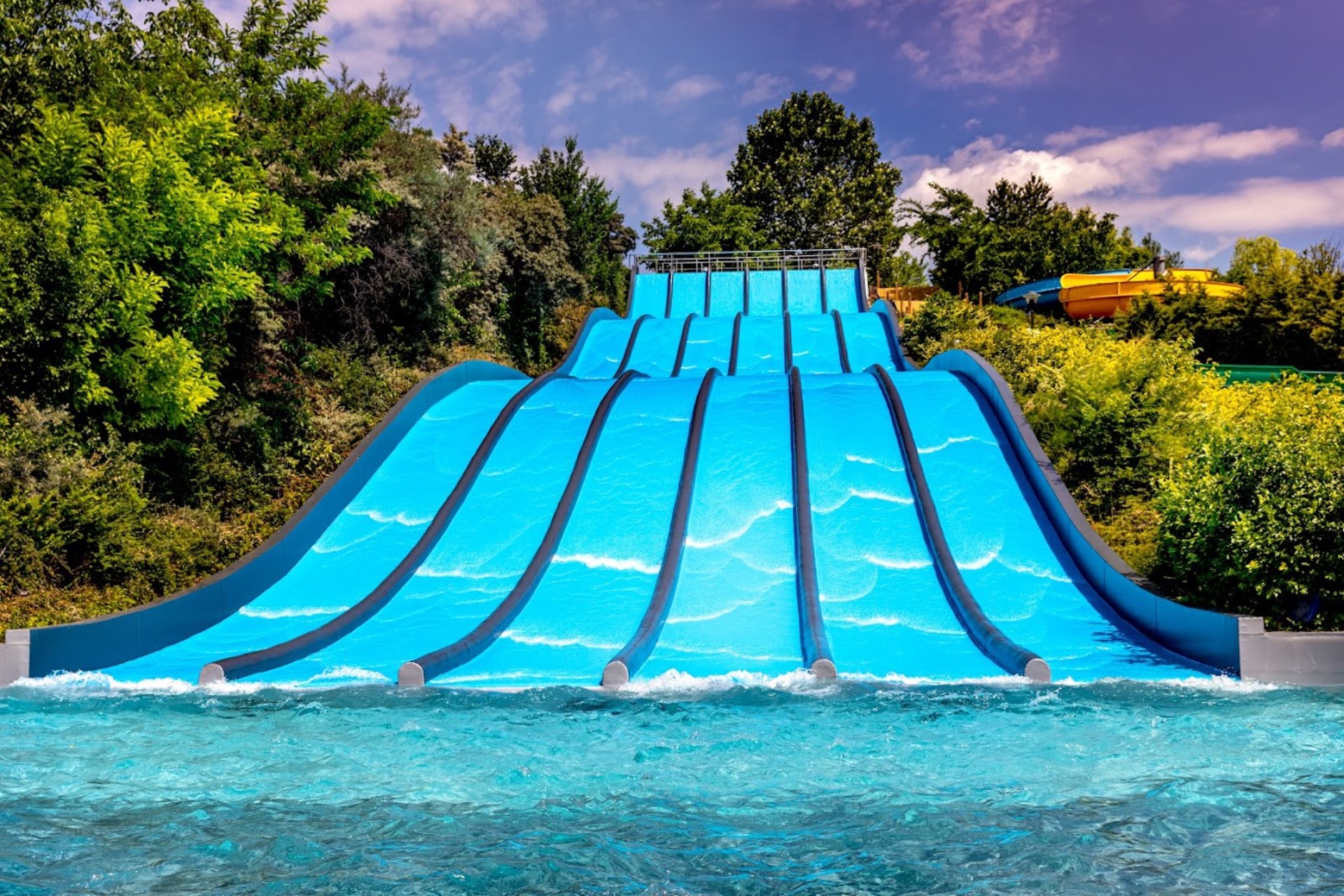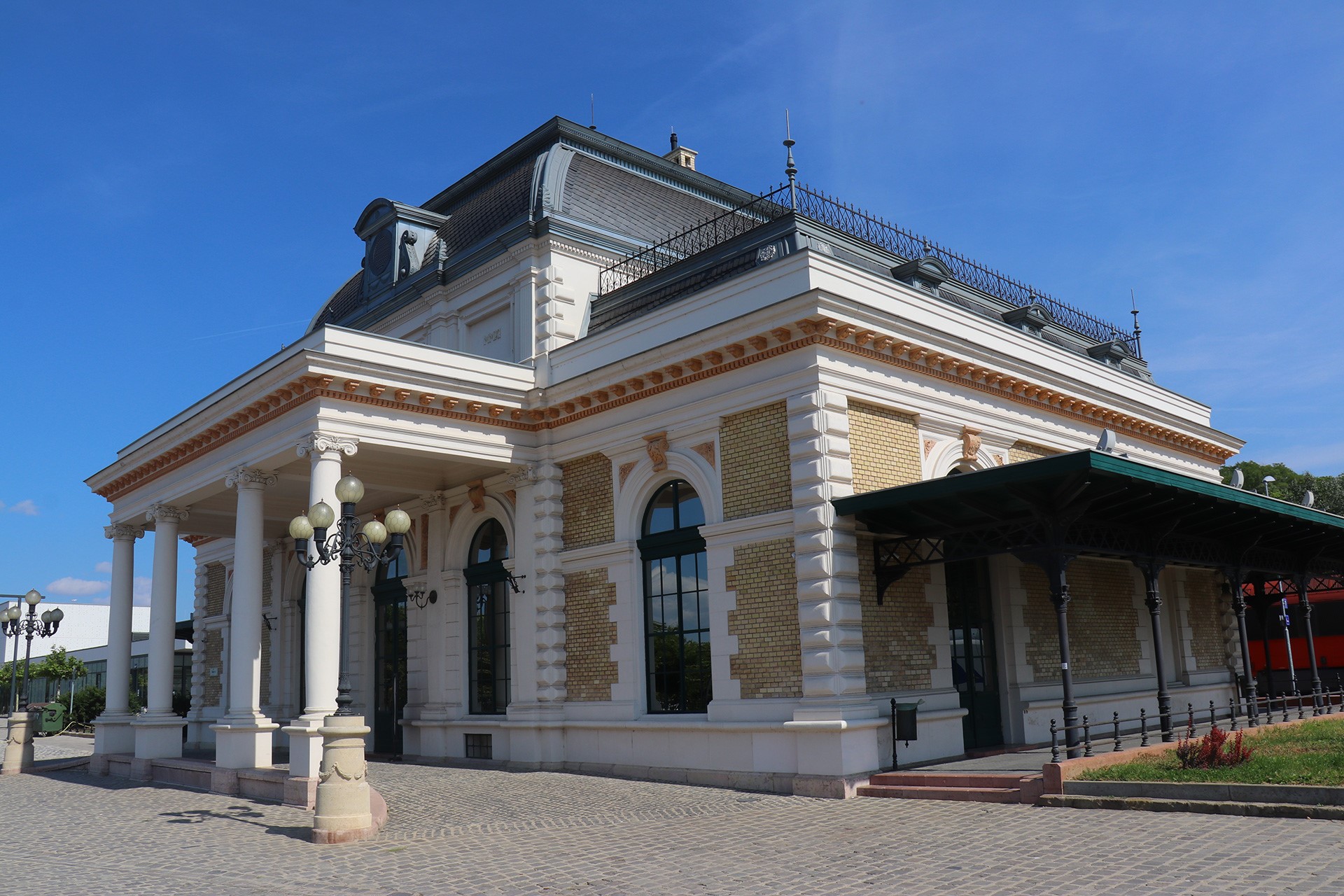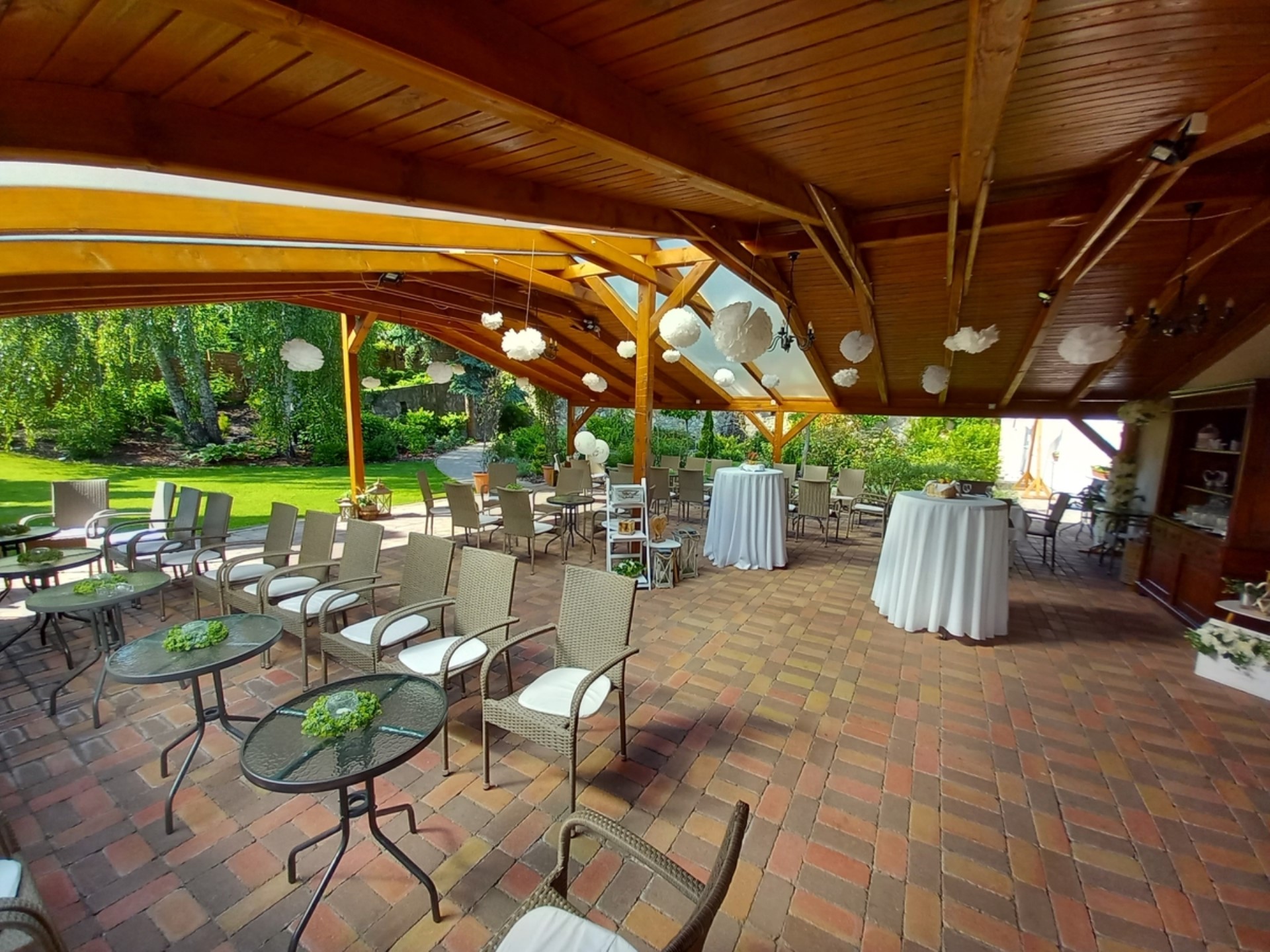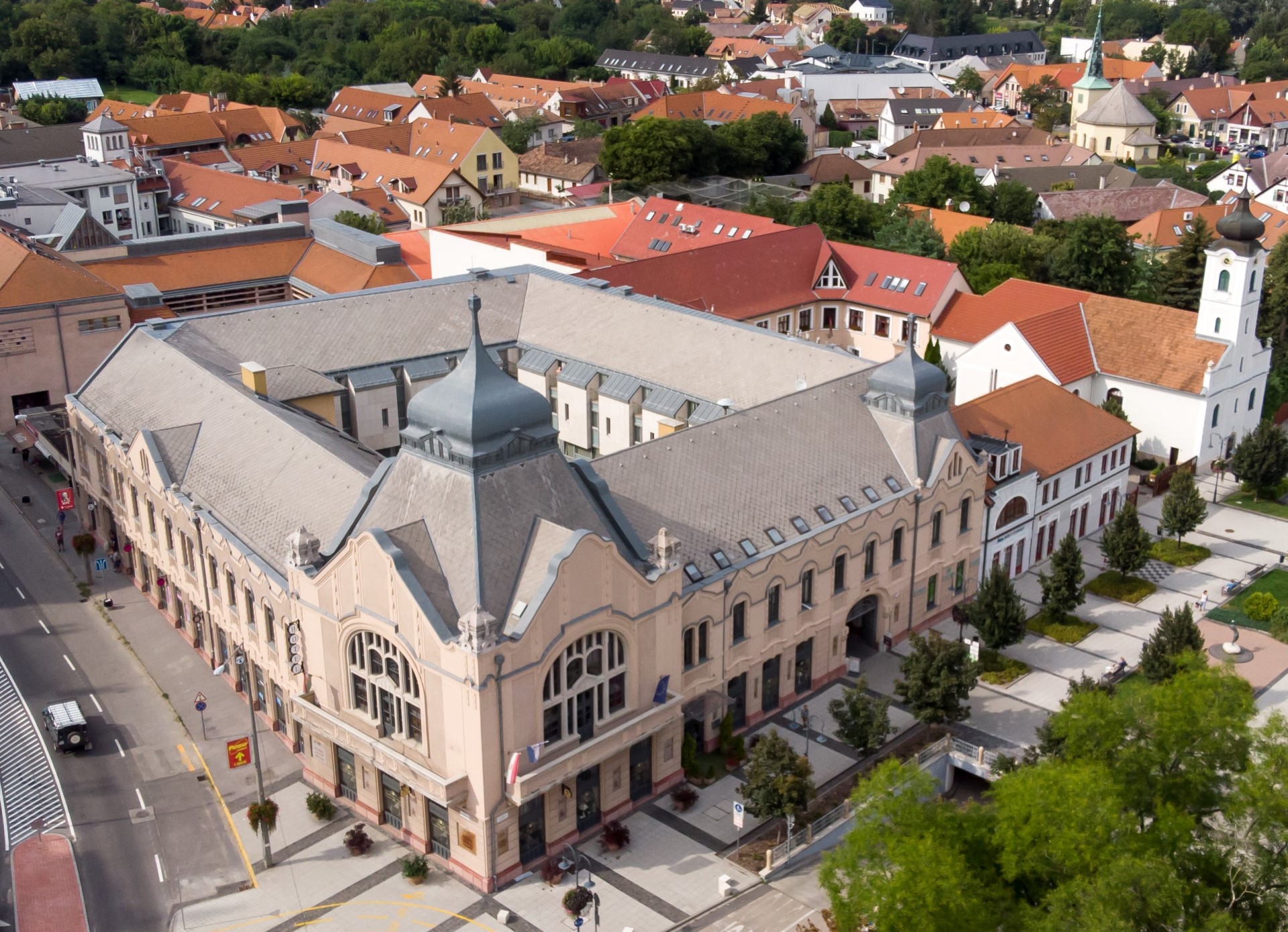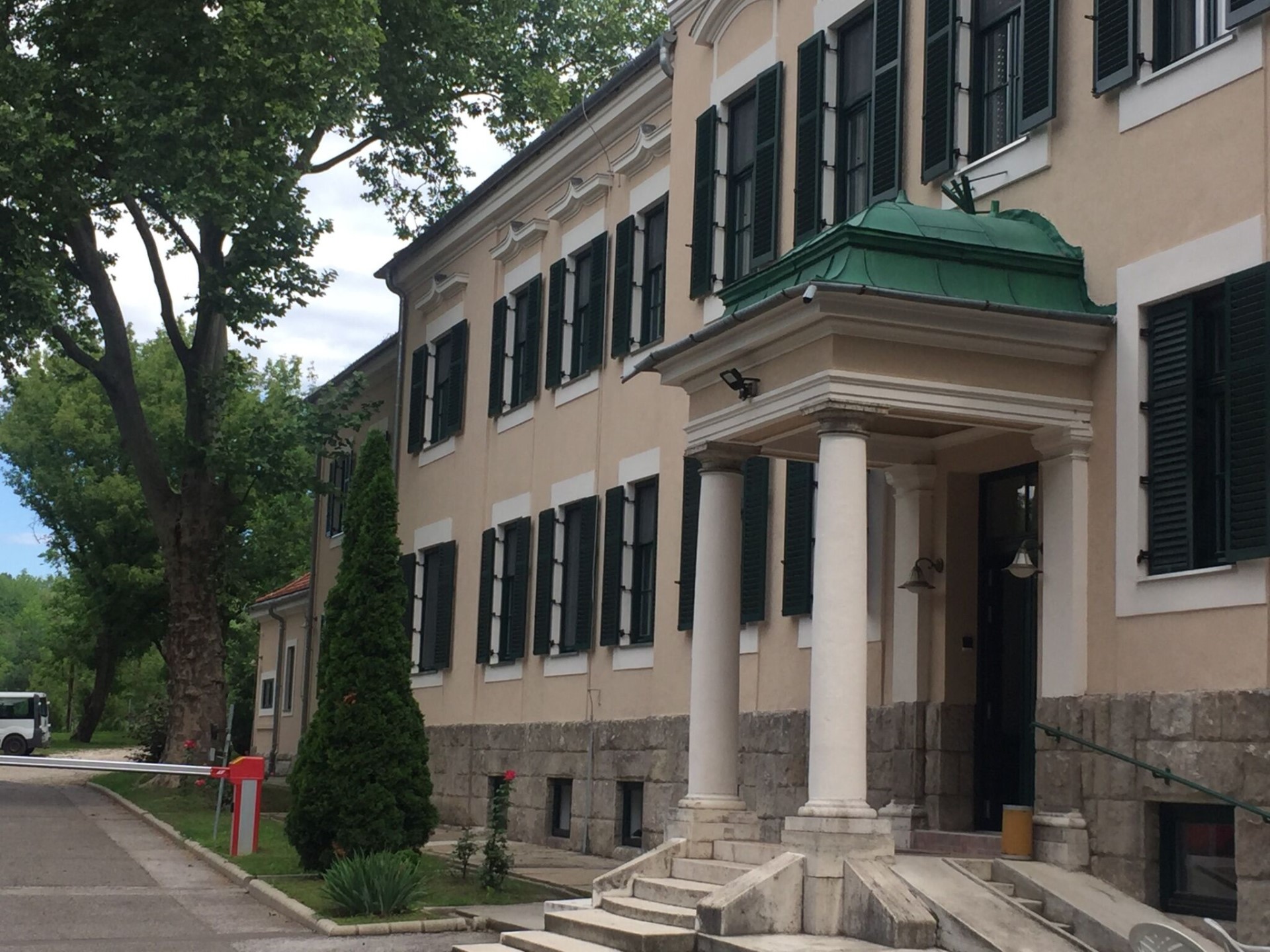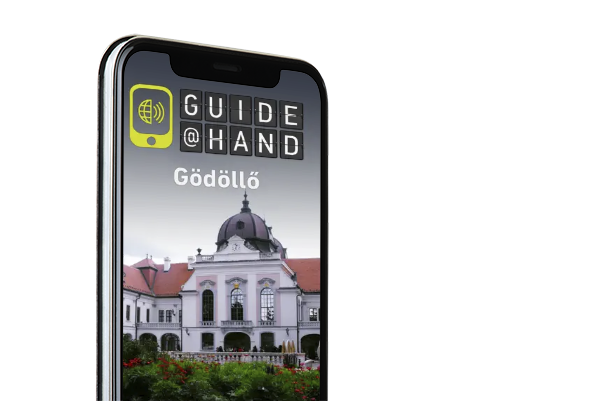Kezdőlap » Gödöllő
Gödöllő
- Hungary’s largest Baroque castle and smallest Virgin Mary statue,
- oldest stone theatre and royal portrait gallery,
- the second largest collection of agricultural machinery in the world
- and Europe’s first World Peace Gong, our city is also home to two collections that are unique to our country: the only permanent Art Nouveau exhibition and the national Scout Collection.
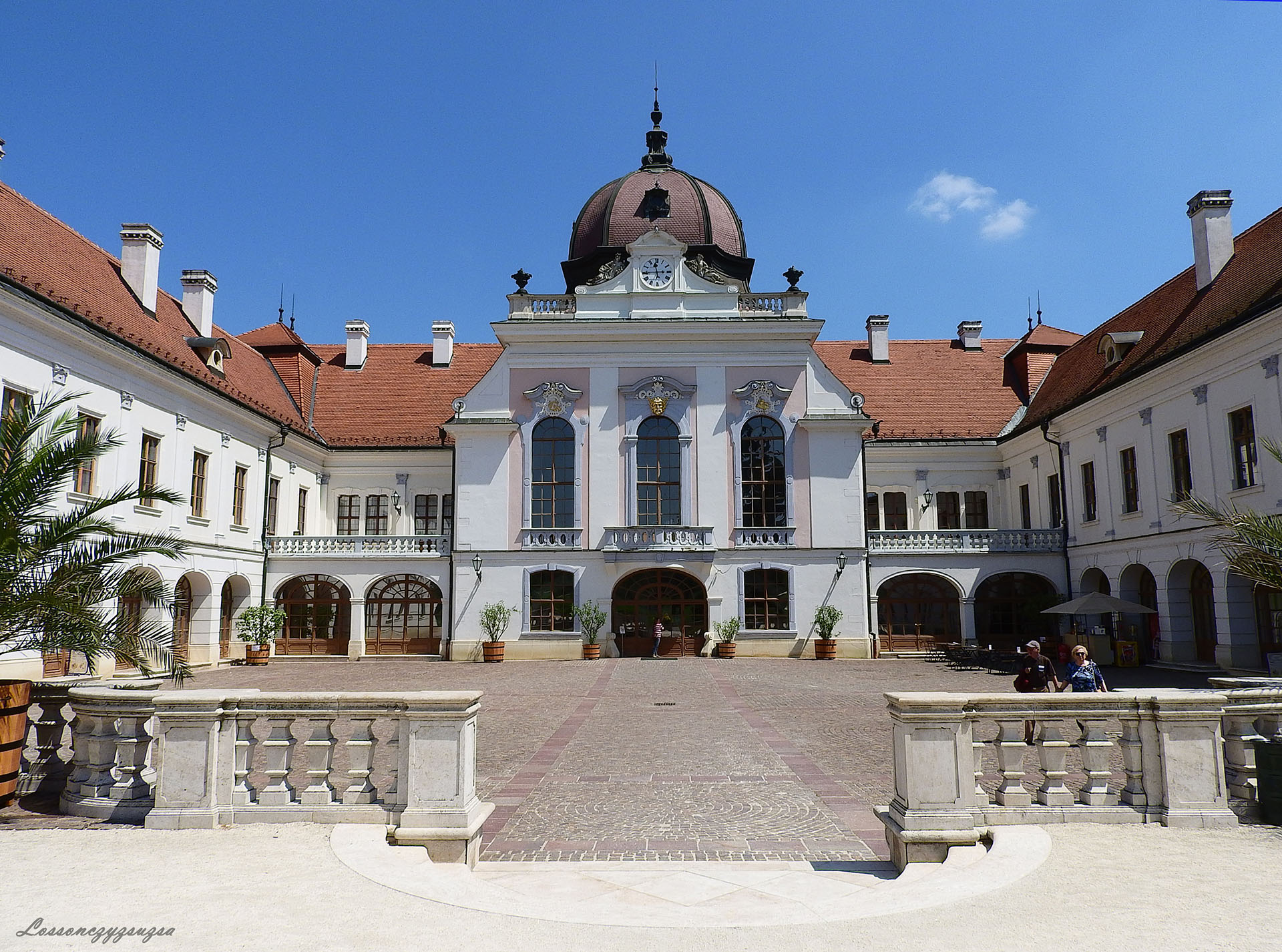
Gödöllő is more than just a charming little town near Budapest... its attractions are unique in the country and even in Europe.
Gödöllő has everything you need to make a sightseeing trip varied and exciting. The magnificence of the royal suits in the Royal Castle and the elegance of the Castle Garden recall the royal era, while the rich photo collection and interesting interiors in the museum recall the history of the town and its famous inhabitants.
Hungarian University of Agriculture and Life Sciences offers a youthful bustle, while the inspired atmosphere of the Marian Shrine offers an inner tranquillity.
Gödöllő is a city of parks, gardens and groves, but also of statues and monuments. In addition to its famous natives, inhabitants and statues of saints, its parks are home to symbols of eternal human values: the World Peace Monument, the World Tree and the National Unity Park, a symbol of cross-border cooperation.

Godollo lies in the clean, green and panoramic area surrounded by forests. Due to its natural attributes and Favorable geographical position Godollo is now one of the attractive Those among Surrounding Settlements Budapest, the capital of Hungary. The forests in the Godollo hills have always Offered Kings and Governors excellent for hunting grounds. The town is surrounded by about 100 km 2 of forest land, a quarter of Which is in Godollo’s management and administration: pine makes up 10%, 25% acacia and oak accounts for 60% of this area. No air pollutant industrial plants OPERATE in the town or its surroundings. Godollo’s air is cleaner than the Hungarian average of harm. Green public area per capita is more than 40 m 2nd The administrative territory under the town’s Jurisdiction covers 62 km 2, of Which 16 km 2 is built-up area. The Elizabeth Park (1898) and the Arboretum (Archduke Joseph Park) (1902) are Nature Reserves WHERE visitors can find a rich variety of rare tree and shrub species.
The population of Godollo in 1900 was 5.893, in 1960 it was17,693. According to the 2001 census the number of the population rose to 29.445, and in 2010 it hit 33,901. This rise of the population is Mainly the result of the tendency for families to leave heavily industrialized areas as well as the recent trend to leave the capital of Budapest in Favour of green areas. The rate of unemployment is low. Mainly the population is Hungarian. In 2010 minority Governments Were Established for the Roma, Polish, German and Rusyn minorities.
The coat of arms of Godollo has a pelican as its main motif. An imaginary bird feeding its young with its own blood, it is the symbol of self-sacrifice. It symbolises the ups and downs in Godollo’s history and conveys the positive historical FACT harm Continuously Godollo has undergone a wonderful revival.
About Godollo's history
The first written document in Godollo’s history back to 1349 Dates It relates the story When King Louis I of Hungary Godollo and gave its forests and land to Incumbent Peter Pohárnok as a present. The settlement was then Called Gudulleu, Gudullur, Gödöle, Gedellő in early documents. The official and permanent ADOPTED name of Godollo was in 1868. During the Turkish invasion in the middle of the 15th century the village of Godollo Became the propriety of various owners and mentions the 1692 census only 26 Families. Then, thanks to Vámossy Hamvay and landed proprietors and Christina Bossányi, remaind in Godollo Hungarian owned residence. Stephen in the second half of the 17th century Godollo kurty Vámossy made the village with the mansion. He was the first nobleman to live in Godollo in his mansion built in the center of the village in 1662nd
The first written document in Godollo’s history back to 1349 Dates It relates the story When King Louis I of Hungary Godollo and gave its forests and land to Incumbent Peter Pohárnok as a present. The settlement was then Called Gudulleu, Gudullur, Gödöle, Gedellő in early documents. The official and permanent ADOPTED name of Godollo was in 1868. During the Turkish invasion in the middle of the 15th century the village of Godollo Became the propriety of various owners and mentions the 1692 census only 26 Families. Then, thanks to Vámossy Hamvay and landed proprietors and Christina Bossányi, remaind in Godollo Hungarian owned residence. Stephen in the second half of the 17th century Godollo kurty Vámossy made the village with the mansion. He was the first nobleman to live in Godollo in his mansion built in the center of the village in 1662nd .
The Decisive turn in the life of Godollo was Brought about by Antal Grassalkovich I (1694-1771) who later Became the proprietor of Godollo. Antal Grassalkovich was a nobleman with a baroque pHenomenal career Godollo who chose to be the center of his estates and thus offer a grand Possibility for development in Godollo. He let the splendid baroque castle built in Godollo Between 1744 and 1751, later Which Achieved great architectural and historical Importance. Even Queen Mary Therese paid a visit here in 1751, Antal Grassalkovich was also a generous cartridge of art with good taste in many ways. When building the Royal Castle of Godollo he Work with famous architects and sculptors of the time Such as Andrew and John Meyerhoffer, Martin and James VÖGERLE Gföller. The coast of today’s great monuments in Godollo date back to Grassalkovich’s era. These Among the second one is the Most Important pilgrimage site and Minor Basilica of Máriabesnyő, Which has become a major pilgrimage site in Hungary. The workforce invited for the grand construction period was made of craftsmen from Slovakia and Germany. As a result the Hungarian population, followers of the Reformed Church, Became of mixed nationality and religion and the number of the population soon doubled. In 1763 Godollo Became a town with the right to OPERATE in the market and has since been the center of the region due to its geographical position and markets. It ACTE as a transition territory Between the Hungarian lowlands and the highlands of Slovakia, the language was a dialect Used by locals Between Used in harm These two territories. After Grassalkovich’s death, his son, Antal Grassalkovich II. and grandson, Antal Grassalkovich III., proved good but poor Patrons of Art Patrons of wealth. The Baroque Theatre was built by Antal Grassalkovich II reopened in 2003 after a break of 150 years.
Antal Grassalkovich III gave the capital to build the plot in Budapest, the Hungarian National Museum and the Hungarian National Theatre in Pest (former National Theatre).
On the other hand he mistreated his grandfather’s well-managed and great property and this lead to the extinction of the Grassalkoviches after his death in 1848. The quick and Surprising Extinction of the Grassalkoviches was just as unexpected and incredible in the Hungarian history as Their upcoming as a noble family. The castle in Godollo was first bought by a banker of Greek origins, George Baron Sina, and then sold to a Belgian bank.
The Revolution and War of Independence of 1848-1849 made Godollo an Important site of the historical events. At first it was the home of Duke Windischgratz, the Austrian troops’ commander in chief, and later, Following the victorious Battle of Isaszeg on 6 April 1849 it Became the headquarters of Louis Kossuth and his generals. This is the question raised WHERE Kossuth and made plans for the dethroning of the Habsburg house, and this is WHERE HE Formulate the Declaration of Independence, Which was ADOPTED by the Hungarian Parliament in Debrecen on 14 April, the same year.
Following the Reconciliation of 1867 the Hungarian Government bought the castle and its lands back and gave THEM auxiliary to Francis Joseph I and Queen Elisabeth as a coronation present. Under the surveillance of Ybl, a reknown architect of the time, the castle was rebuilt to meet the new royal Demands. When this is the Baroque Theatre was closed. From this time on the Castle Became the spring and autumn residence of the royal family. The formation of the new holiday site and royal Demesne RESULTAT in the quick development of Godollo. It was Franz Joseph’s wish to harm the North Railway Brought to go through Godollo. In 1911 the suburban train line was linked with it, too. The infrastructure underwent a serious development: from 1884 Godollo’s public administration was reorganised to suit the municipality. From 1907 on the main roads Were built from stone, and from 1908 was Introduce electricity. New model farms and agricultural educational Institutions Were Established the Technical School for Chicken Breeding (1898), the Bee Farm (1899-1900) and the Potato Cultivation Farm (1913). The SUCCESSORS of These are still working. Work around the royal residence provided the humble but secure life for the main coast of Godollo’s population. In 1869 the first Hungarian Savings Bank, Savings Bank of the famous, and the first was opened by Francis Joseph shares Subscribed Were Himself.
At the beginning of the 20th century Godollo Became a fashionable holiday resort and tourist attraction. The healthy air, beautiful sights, big parks, good public transportation, the nearness of Budapest and the presence of the royal family made Godollo attractive to the bourgeoisie in the capital. A number of actors, writers and journalists rented a villa or let the new one built in Godollo. Two hotels, the number of baths, and restaurants Were at the service of the visitors. The Art Colony (1901-1920), the only artist to deal with seccession group, was formed upon the advice of Aladar Körösfői Kriesch, a major painter of the time. Its members started to OPERATE the weavers’ workshop in 1907. The Booming tourism made it Possible for the small entrepreneurs and small craft industries – Especially the services – to Develop vigorously. As the outcome of the natural structure of the population reorganised: the number of agricultural workers Board. In 1900 49.9% of the population working in agriculture Board to 21.9% in 1930. By 1990 Godollo Became an administrative center.
At the end of World War I Godollo once again Became an Important political arena. This IS WHERE King Charles IV. got news about the Dissolution of the Monarchy in the autumn of 1918. The Negotiations with Karolyi, the first prime minister of the Hungarian Republic, Were held in the castle. The Ministry of Agriculture held in Godollo Their deliberations. On this occasion an Important question was raised as to Whether the former royal residence and its auxiliary land Should Be made an agricultural center by building an agricultural academy here. Zsigmond Moricz, a major Hungarian Novelis and Social Realist, Took coast in These debates and he wrote an article with the title: One diamond from the Kings’ crown and one thousand beggars knapsacks.
In 1919 Aurel Stromfeld, Chief of Staff of the Hungarian Red Army (the militia of the Revolutionary Soviet Union) of the time, Organised his army headquarters in the Grassalkovich castle. Later it was Occupied by Charles, the heir Romanian, who was then the leader of his invading Romanian army. Between the two world wars the castle was the residence of Miklós Horthy, Regent and Head of State in Hungary (1920-1944). In 1928 with the help of the Rockefeller Financial Trust and based on an American model is the first institute of health care reform, the county was Established in Godollo. The components of the institute Such as the maternity ward, the dentistry and the nurses Were Governo by the National Public Health and Medical Office Organized in 1930. This period saw a number of representative, international happenings in Godollo: the Jamboree in 1933 hosted 54 nations 26,000 Scouts and girl Scouts and in 1939 the ‘meeting, Pax Ting was Organized bottom here. Count Paul Teleki, former prime minister of Hungary and Chief Scout of the time is buried in the cemetery of Máriabesnyő church. Horthy military famous visitors like Victor Emmanuel, the Italian king and Pope Pius XII in 1934 in 1937th
Following World War II the development of the town Took a turn. Part of the Grassalkovich Castle Became the barracks of the Soviet Army soldiers, and the other was Transformed into the home of the social welfare services of the City Council of Budapest. New plans for urban development Were to change the profile of the town. Its holiday resort was soon overshadowed by the profile incoming Such industries as Ganz (Hungarian Electricity Company) in 1950, Which was Followed by other Representatives of the industries in Consecutive years. The other Decisive turn in the life of Godollo was the relocation of the Agrarian University in Godollo to 1950. With this move the dream plans Which army started forming at the beginning of the century came true and complete Serres Became the country’s agrarian center. The university gave good grounds for agrarian and other scientific Institutions to be Established. As a result of the industrialization and the creation of jobs the number of the population Almost Triplet. New housing estates Were built. Although the two Settlements Were physically attached, Máriabesnyő, Which Used To Be an Independent settlement, was attached to Godollo Officially in 1965. On January 1, 1966 Godollo DECLARED was in town, and the seat of economists (neighbouring the town) was attached to Godollo micro-region.
Godollo is a traffic hub as well. The Budapest-Miskolc railway main line passes here. There are two stops in Godollo: State and Máriabesnyő stations. The Suburban Train Makes it Possible for visitors to reach Godollo from Budapest in less than 45 minutes. The suburban train starting from Ors chief square (end of M3 red metro line in Budapest East) meets the train line in Godollo. Main road crosses the town bottom three. M3 and M31 motorways pass the recently inaugurated right next to Godollo with a direct linkage to the town. Thanks to These Both Liszt Ferenc International Airport and the capital are only a 25 minutes drive from Godollo. Vac, Pécel and Jászberény, Which are Important towns in Hungary, are very easy to reach bottom Directly linked through main roads from Godollo. Significant number of the main bus lines go through Godollo. The public transportation system in inner Godollo also provided by a number of buses. The small airdrome with a grassy runway outside the town of Godollo Also functions as a parachuting center.
The economy of the town has been Transformed substantially in recent years. The formerly big industrial undertakings have become smaller, more modern. New Businesses Move To have Godollo creating more jobs than available in Godollo Were before. At present there are no more available industrial spaces in the town. Godollo Business Park is a good opportunity for prospective longtime Investors for Investments and Opportunities provides jobs for the population in the region. Industries advocate harm environment friendly and knowledge-based techniques, advanced technologies and apply Which Those require research development activities are welcome.
The population of the town retention capacity has improved substantially. The local government of Godollo wants, as far as possible, to Provide for all the basic services and Important. These Should Be available locally or in the very close neighborhood for the population of Godollo.
The Most Important resources of the town are the human resource. Godollo is in Possession of the whole palette of education from kindergarten to university and thus there is Possibility for the Comprehensive Development of Human Resources and clever. The Institution system is a well-estab- lished and Differentiated education system Both in its structure and its content and Such as it lives up to the expectations of Those seeking it.
Culture
Several events in Gödöllő’s rich cultural life recall important events in the city’s history. The Antal Day Celebrations and the Baroque Castle Days commemorate the person of Antal Grassalkovich, the builder of the castle, while the Baroque Weekend commemorates the visit of Queen Maria Theresa.
The events of the Violet Day, the Coronation Weekend, the Hunting Day and the Advent Castle Days all refer to the royal era and the beloved Queen Elizabeth of Hungary, who spent 2,000 nights in Gödöllő. The Royal Castle’s magnificent ceremonial hall and Riding Hall are the venue for the International Harp Festival and the Liszt Festival, which have been successfully held for many years, and the Baroque Theatre, with its special staging equipment, is a favourite with opera fans.
For 30 years, our city has remembered the actual liberation of the country and the withdrawal of the Soviet army with a prestigious celebration of Freedom Day at the World Tree in the Lower Park.
Sights in the Gödöllő area
Bear Farm, Veresegyház
The Veresegyházi Bear Sanctuary is a tremendous experience, located far from the noise of the city, in a beautiful natural environment,
Basilica Minor Máriabesnyő
The famous Virgin Mary Shrine, Máriabesnyő’s unique element is in the Nagyboldogasszony Basilica, a two storied church with two statues on
Royal Palace
A time-travel not only for Sisi-fans. Leave Budapest city to explore the pretty town of Gödöllő, and visit the Royal Palace,
Gödöllő Royal Waiting Hall
The Gödöllő Royal Waiting Hall: A historic gem in Hungary, where royal elegance and grandeur still linger. Nyitvatartás 2024. február 1-től
The values of Gödöllő are well illustrated by the recommended walking routes and thematic itineraries, which feature the city’s attractions.
Lovers of literature and art, Queen Elisabeth, the legendary Sisi or the history of the scouts will find a city to suit their interests. For pilgrims, a visit to the shrine of Mary in Besnyő and the Mary’s Way from Budapest can be a spiritual experience, complemented by the Besnyő Passion on Palm Sunday or the Passion of the Bethlehem Flame ceremony in Gödöllő at the beginning of Advent.
The green belt surrounding the city, which is a clean, fresh air zone, is a treasure to be preserved for future generations. This area, rich in lakes, and the little-known but surprisingly valuable villages of the Gödöllő region, offer plenty to discover for visitors from the capital or from anywhere in the country.
Gödöllő offers a wide range of restaurants and pastry shops serving both international cuisine and local specialities. For those arriving for several days, comfortable accommodation is available, from hotels and dormitories to private apartments.
The Tourist Association of Gödöllő wishes you a pleasant stay in Gödöllő and its surroundings!

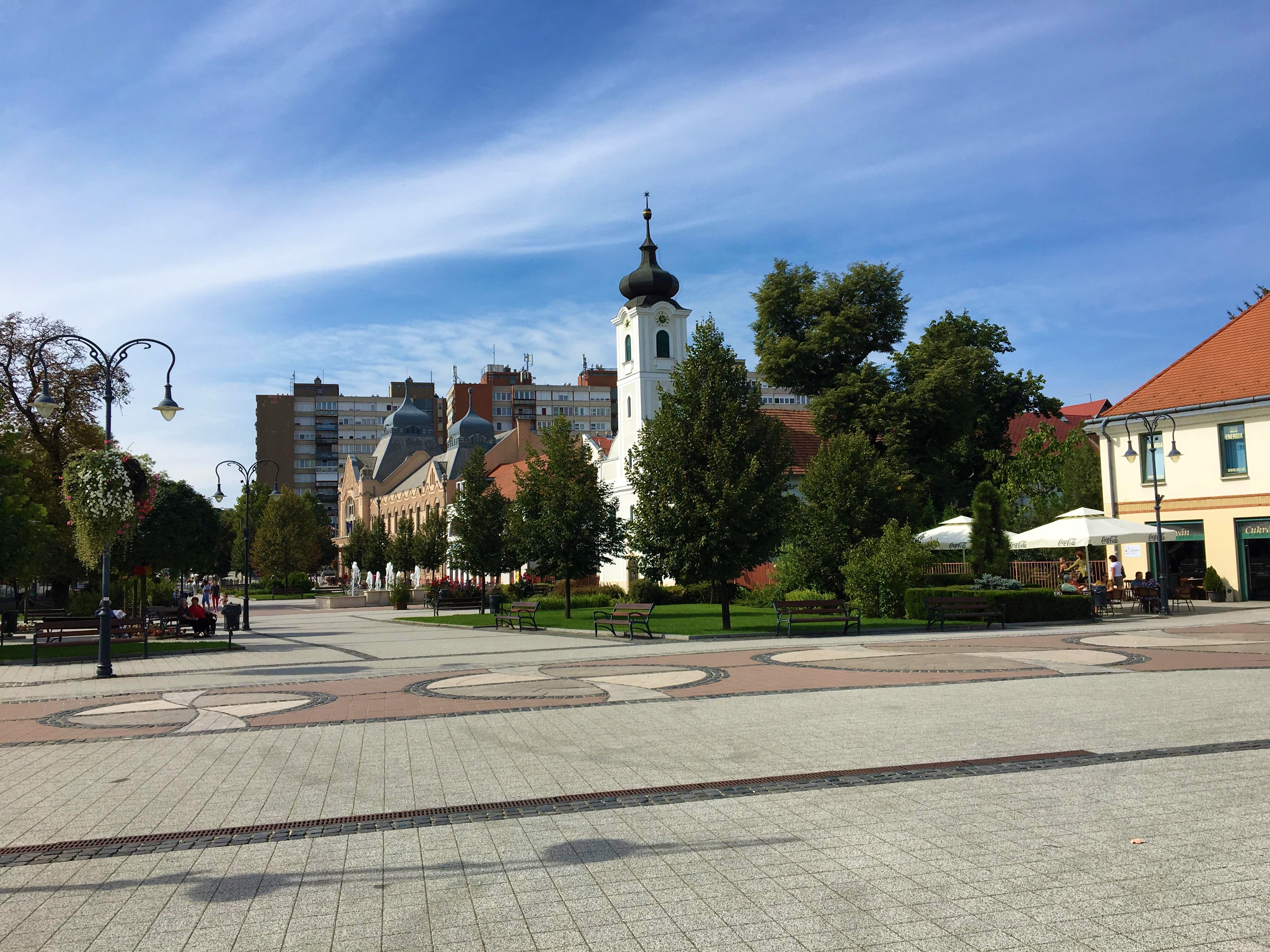
Access
The journey to Gödöllő from Budapest takes half an hour by car and three quarters of an hour by HÉV.
It is closer to the Liszt Ferenc International Airport than the capital, with a 20-minute drive from the airport.
From the centre of Budapest, Andrássy Avenue, the World Heritage Avenue, leads to the M3 motorway, passing by the Városliget.
We recommend the old route 3 from Keleti Railway Station via Kerepesi street without paying a toll.
The Gödöllő HÉV, which has been in operation for more than a century and is the only one in the country to preserve the tradition of left-hand traffic, can be a special experience.
From Budapest, trains departing from Keleti Railway Station take 30-50 minutes to Gödöllő Royal Waiting Hall.
Cycle route from Budapest city centre to the city border to Ilonatelep, along the old road 3.
Gödöllő can be reached by bus from the Stadion Bus Station, at the Stadionok station of the M2 metro line.
Accomodations
Árnyas Pension
Our accommodation is a quiet and family-friendly jewel box on the outskirts of Gödöllő. Our 27 rooms are air-conditioned and
Queen Elizabeth Hotel*** Superior
The Erzsébet Királyné Hotel*** is located in the center of Gödöllő, near the Royal palace and only 30 minutes away
Mater Salvatoris House of Retreat and Convention Centre
The Mater Salvatoris House of Retreat and Convention Centre is open every day of the year to guests seeking spiritual
Turisztikai Egyesület Gödöllő
- Gödöllői Királyi Kastély, Tourinform iroda
- godollo@tourinform.hu
- +36 70 550 0575 (H-P: 10.00-18.00)
